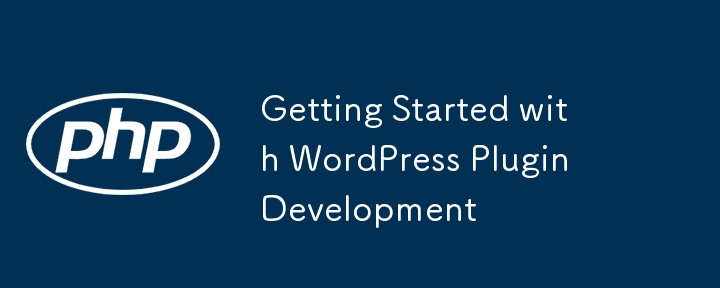

Getting started with WordPress plugin development can open up a world of possibilities for customizing and enhancing WordPress sites.
Whether you're looking to create a small utility plugin or a complex feature-rich plugin, understanding the basics is crucial. Here’s a guide to help you begin your journey into WordPress plugin development.
Plugins in WordPress are tools to extend the functionality of your WordPress site. They can be as simple as changing a few lines of text on your site or as complex as implementing an entire eCommerce system.
The key to successful plugin development is understanding WordPress core functionality and how to interact with its API and hooks system.
Before you start developing a plugin, ensure you have a solid foundation in the following areas:
Open your my-first-plugin.php file and add the following header to tell WordPress that it’s a plugin file:
<?php /* Plugin Name: My First Plugin Plugin URI: http://yourwebsite.com/my-first-plugin Description: This is my first WordPress plugin. Version: 1.0 Author: Your Name Author URI: http://yourwebsite.com */
Below the plugin header, write a simple function to see how plugins can modify WordPress behavior. For example, let’s make a plugin that modifies the content of all posts:
function modify_content($content) {
return $content . '<p>This is added by my first plugin!</p>';
}
add_filter('the_content', 'modify_content');
Once activated, navigate to any post on your site, and you should see the new text appended to the content of each post.
Starting with WordPress plugin development can seem daunting, but breaking it down into manageable steps can simplify the process. By creating your first plugin, you gain the foundation to explore more complex features and contribute valuable tools to the WordPress community.
The above is the detailed content of Getting Started with WordPress Plugin Development. For more information, please follow other related articles on the PHP Chinese website!
 Connected to wifi but unable to access the Internet
Connected to wifi but unable to access the Internet
 What is the difference between TCP protocol and UDP protocol?
What is the difference between TCP protocol and UDP protocol?
 How to use sort function
How to use sort function
 What are Python identifiers?
What are Python identifiers?
 How to use the axis function in Matlab
How to use the axis function in Matlab
 How long does it take for Douyin recharge to arrive?
How long does it take for Douyin recharge to arrive?
 What is an optical drive
What is an optical drive
 How to solve cad poisoning
How to solve cad poisoning




